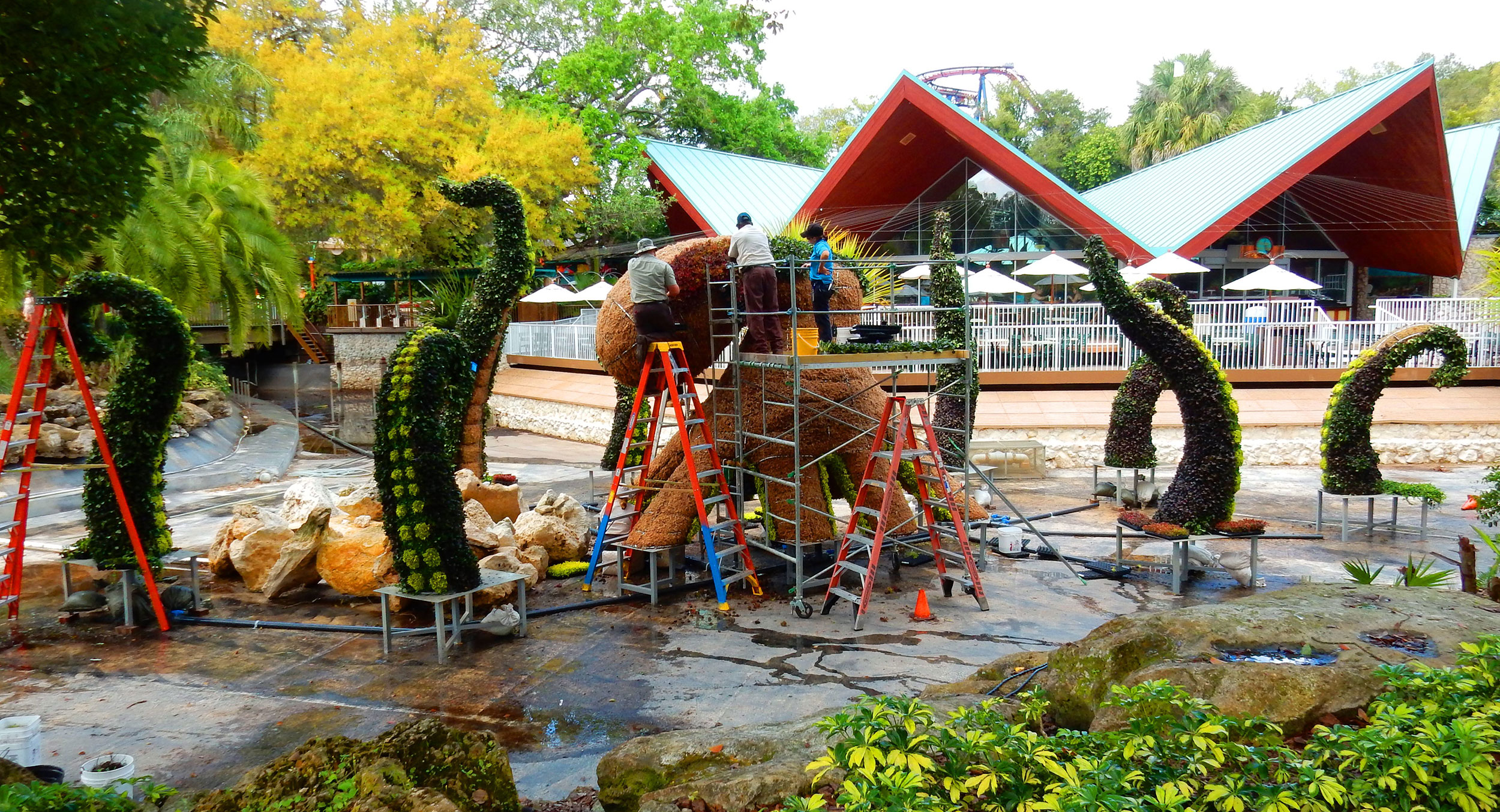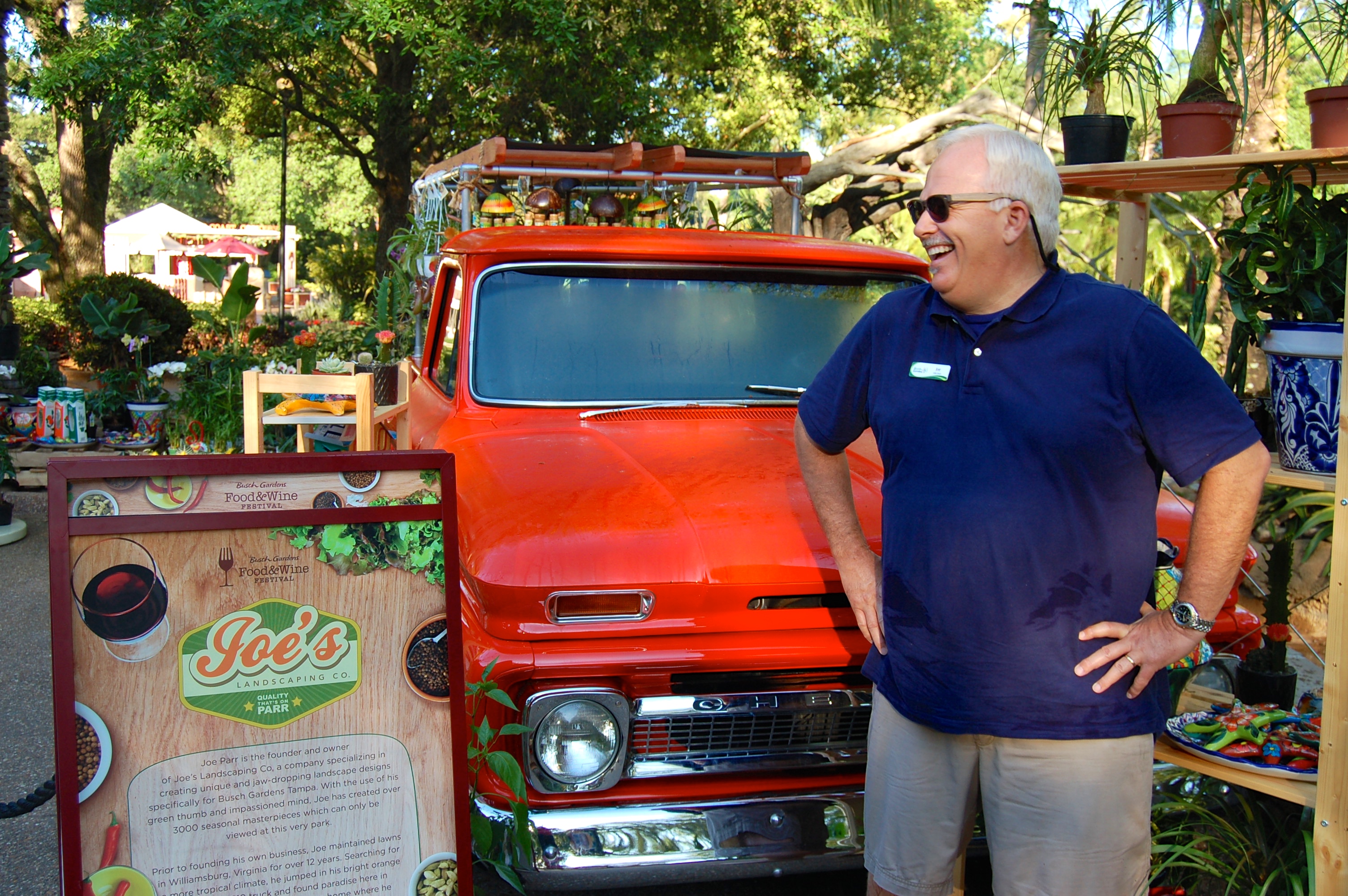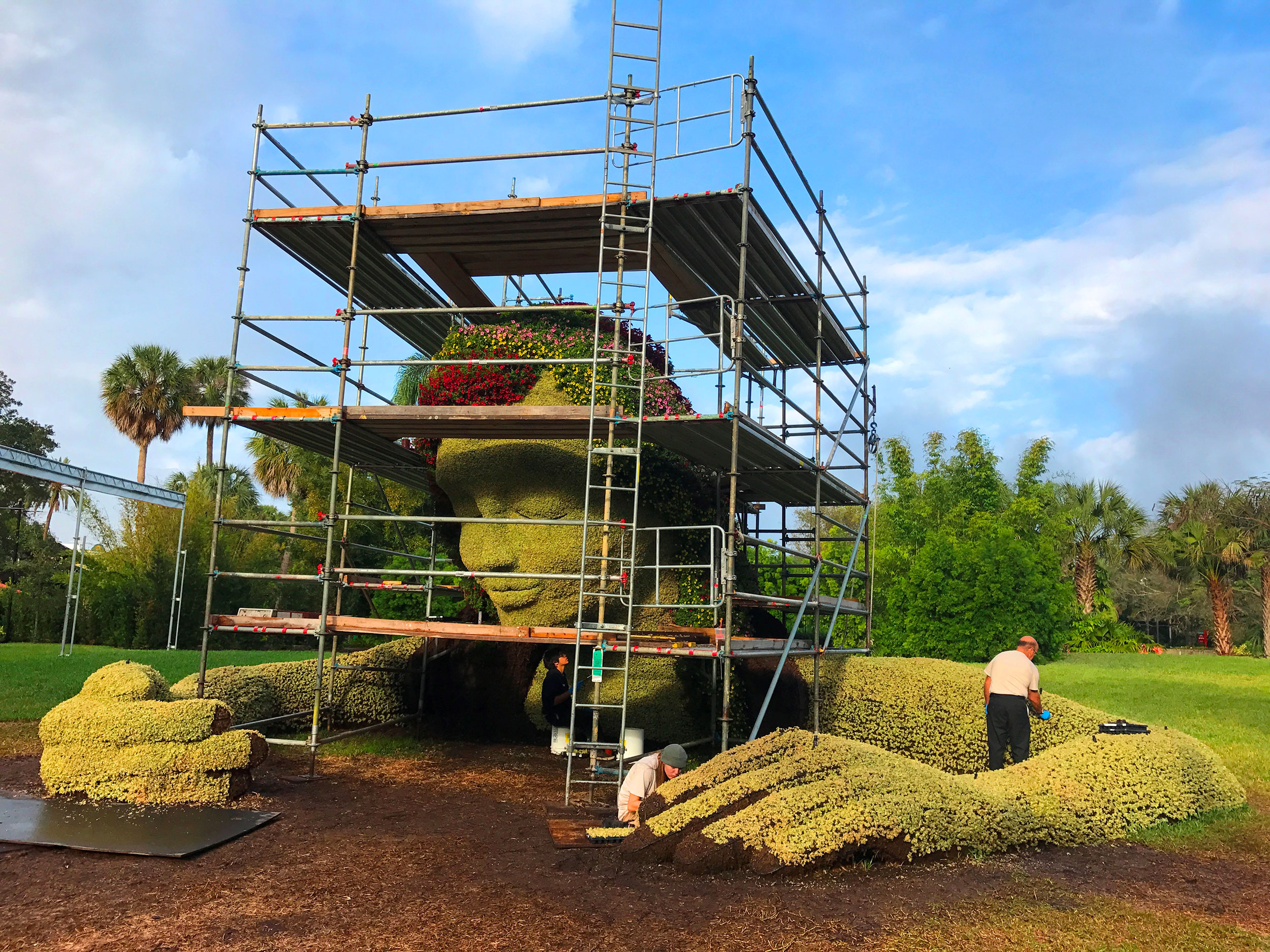by Erica Stacy
Photos courtesy of Joe Parr
Virginia Tech alumnus, Joe Parr ’83, has cultivated an amazing career from the ground up.
From a quiet pool in the center of a busy park, an enormous octopus raises its tentacles above unsuspecting tourists. Nearby, a giant orangutan gazes curiously at passersby. A short walk away, the Spirit of Spring stretches her arms outward, emerging from her winter lethargy.
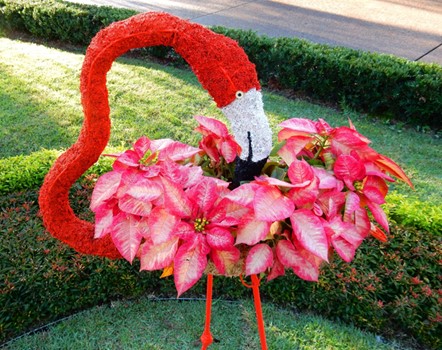
It wouldn't be Florida without a pink flamingo.
For Joe Parr (horticulture ‘83), director of horticulture at Busch Gardens and Adventure Island, Tampa, Florida, these living sculptures are the result of months of planning, careful construction, and fastidious plant maintenance. Parr leads the team of landscape artists who transform the green spaces throughout the 335-acre park into magnificent canvases where art literally comes alive.
“A lot of people will go to an area and totally miss the plants,” Parr said. “What I try to do is to create planting designs that you can’t ignore. Topiaries take plants off the ground and put them right in your face.”
Topiary is one of the oldest and most familiar types of living sculpture. The practice can be traced back to ancient Egypt, Persia, and Greece, where wealthy landowners often displayed sculpted trees and shrubs in their gardens. During the Middle Ages, the art was passed down through monastery cloisters. It became highly developed during the Renaissance—particularly in France, Italy, and Holland.
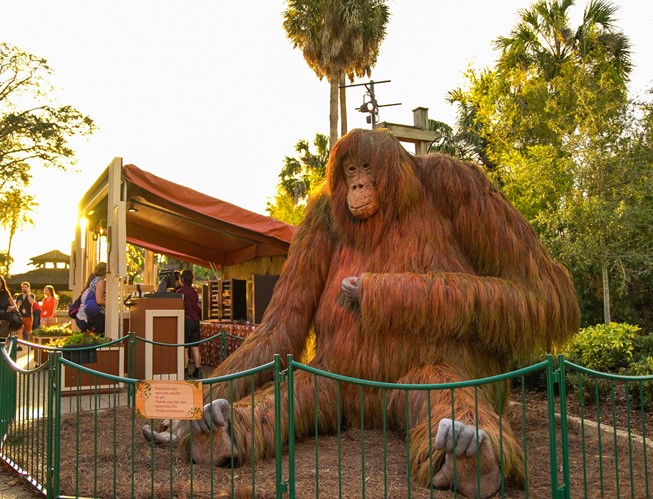
Darwin the orangutan watches the scene.
In America, topiary first appeared during the late 17th century, imported into formal gardens, including those at the royal Governor’s Palace in Williamsburg, Virginia.
The giant topiaries that are featured in many modern botanical gardens and on the grounds of theme parks across the United States are colossal pieces of art that begin with complex construction plans and require expert care and careful maintenance.
“Our grand topiaries are unique to American horticulture for their large size, intricate detail, and use of primarily live plants,” said Parr. “They combine elements of horticulture, engineering, and architecture to create a live art that is just too impressive to ignore. I call them plants that roar.”
According to Parr, “The inspiration for many of the grand topiaries at Busch Gardens come from living animals.”
After he has formulated an initial concept, Parr sketches a design. Next, a 3-D computer model is fashioned. Using the model as a guide, artisans and fabricators join a puzzle of steel rods into an interconnected full-size grid that forms the bones of the topiary. Molded sections are fastened to the steel frame and covered with moss.
Then topiary horticulturalists insert individual plant plugs into the moss—1 square inch at a time—until the entire surface is covered. The plants that will fill out the figure are selected with consideration for color and texture, as well as the season during which they will be featured.

Darwin the orangutan gets regular "grooming" to keep him looking good.
To preserve and maintain the sculptures, the artists manicure the plants several times a week. Moisture is monitored daily, and liquid nutrients, fungicides, and occasional pest control are applied preventatively and as needed at the first sign of any problems.
Parr credits Virginia Tech with “getting his career rolling.” Prior to his time at Busch Gardens, Parr worked for the Walt Disney Company as a horticultural specialist at its nursery and tree farm and as a seminar instructor for Walt Disney Productions. As a student, he interned with Colonial Williamsburg.
This year, Parr’s designs have been nominated for a prestigious National Design Award, sponsored by the Cooper Hewitt, Smithsonian Design Museum to recognize excellence in American design.
But Parr isn’t in it for the awards.
“My greatest compliment is to see the children stop in their tracks, mouths wide open, to admire the grand topiary,” he said. “That is success to me, and it is very gratifying.”

